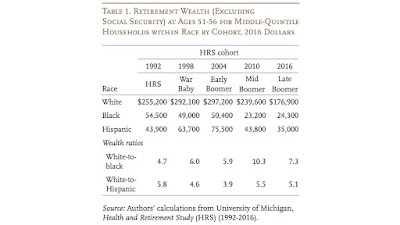From a recent report by Social Security's Office of Inspector General (footnote omitted0:
Our objective was to determine whether beneficiaries1 who received Vocational Rehabilitation (VR) services attribute those services to their work-related outcomes. ...
The Social Security Act authorizes SSA to pay State VR agencies for the services they provide beneficiaries who meet certain conditions. ... SSA does not manage State VR agencies. ...
More beneficiaries in our population had unsuccessful work outcomes after they received VR services than those who had successful outcomes – 62 percent did not have successful work outcomes while 38 percent did. Per our survey, the beneficiaries with unsuccessful work outcomes did not find VR services as helpful as those with successful work outcomes. While SSA reimburses VR agencies for services provided, SSA does not have authority over the quality of those services. Accordingly, while our survey indicates VR agencies could better serve some beneficiaries, SSA has limited ability to effect change in the quality of VR services its beneficiaries receive. ...
Of the 122 beneficiaries with successful outcomes who responded to whether they would have been able to return to work without the VR services they received, 79 (65 percent) replied no. Of the 123 beneficiaries who responded to whether they would have been able to work for as long as they had without VR services, 85 (69 percent) replied no. ...
Note the implicit assumption that VR would do a better job if only it were managed by Social Security. LOL.
The entire thrust of the report seems to be that a 38% success rate is poor. Actually, that rate seems pretty good to me. Of course, VR turns away a lot of people. They only work with those who
seem to have potential. You can call it cherry picking if you wish but
I'd say they're just realistic. OIG seems to assume that there's some way of rehabilitating most Social Security disability recipients which is wrong. The people drawing those benefits have very serious health problems. Few of them get better. In fact, the majority keep getting worse over time.







